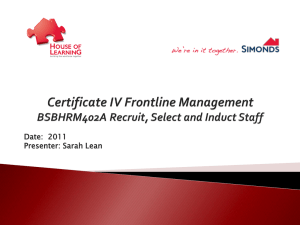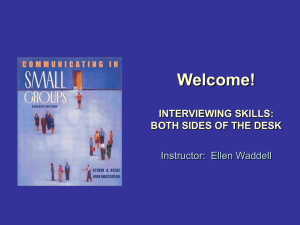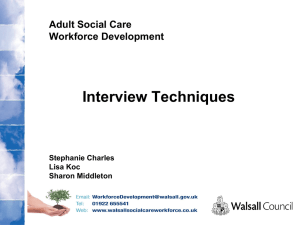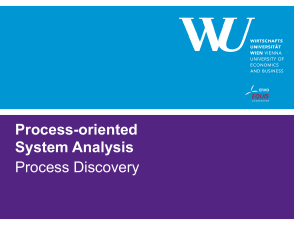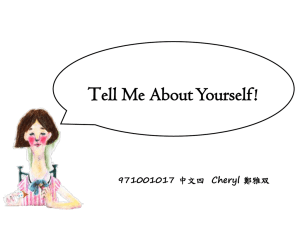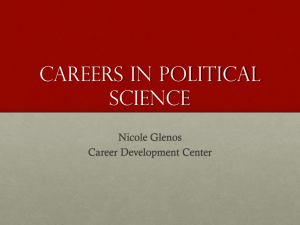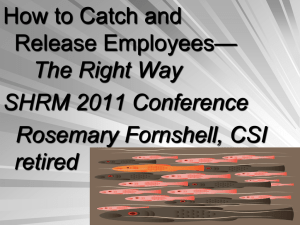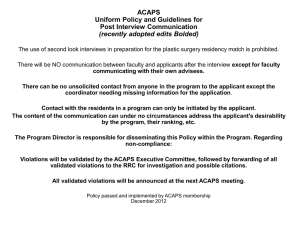Human Resource Management 13e.
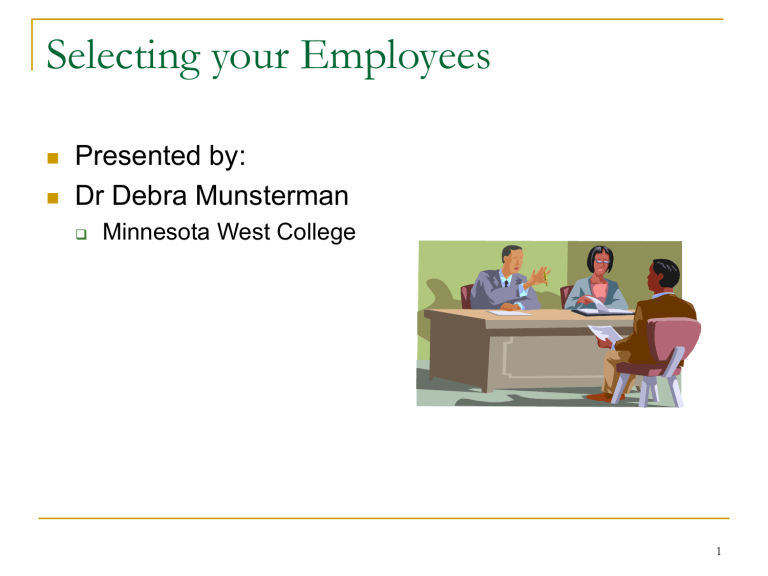
Selecting your Employees
Presented by:
Dr Debra Munsterman
Minnesota West College
1
Selection and Placement
Selection
The process of choosing individuals with qualifications needed to fill jobs in an organization.
Organizations need qualified employees to succeed.
“Hire hard, manage easy.”
“Good training will not make up for bad selection.”
Placement
Fitting a person to the right job.
2
Applicant Knowledge, Skills, and
Abilities
Person-Job Fit
Matching the knowledge, skills and abilities (KSAs) of people to the characteristics of jobs (tasks, duties and responsibilities –TDRs).
Benefits of person-job fit:
Higher employee performance
Lower turnover and absenteeism
Person-Organization Fit
The congruence between individuals and organizational factors.
KSAs = TDRs = Job Success?
3
Person/Job Fit Mismatches
Skills/job qualifications
Geography/ job location
Mismatch
Situations
Time/amount of work
Earnings/ expectation s
Work/family
4
Criteria, Predictors, and Job
Performance
Selection Criterion
A characteristic that a person must have to successfully perform work.
Predictors of Selection Criteria
Measurable or visible indicators of selection criteria.
Validity
The correlation between a predictor and job performance.
Reliability
The extent to which a predictor repeatedly produces the same results over time.
5
Validity
Correlation Coefficient
Is an index number that gives the relationship between a predictor variable and a criterion variable.
Concurrent Validity
Is measured when an employer tests current employees and correlates the scores with their performance ratings.
Predictive Validity
Measured when test results of applicants are compared with subsequent job performance.
6
Job Performance,
Selection Criteria, and Predictors
7
Concurrent and Predictive
Validity
8
HR Employment Functions
1. Receiving applications
2. Interviewing applicants
3. Administering tests to applicants
4. Conducting background investigations
5. Arranging physical examinations
6. Placing and assigning new employees
7. Coordinating follow-up of new employees
8. Exit interviewing departing employees
9. Maintaining employee records and reports
9
Selection Process
Flowchart
10
Applicant Job Interest
Realistic Job Preview
The process through which a job applicant receives an accurate picture of the job.
Prevents the development of unrealistic job expectations in new employees.
Helps avoid truth-in-hiring lawsuits
11
Pre-Employment Screening
Electronic Assessment
Screening
When To Use
Electronic
Screening
There is a large volume of applicants
Quality of hires needs to be increased
Hiring cycles need to be shortened
The cost of hiring needs to be reduced
There is a need to reach unvisited geographic areas
12
Application Disclaimers and Notices
Employment-At-Will
References Contacts
Employment Testing
Application Time Limit
Information Falsification
Application
Form
13
Applications
Purposes of Applications
Record of applicant’s desire for the job
Provides a profile of the applicant
Basic record for applicants hired
Research effectiveness of the selection process
Resumes as Applications
Resumes are applications for EEO purposes.
Resumes should be checked for truthfullness.
14
Sample Application
Form
15
EEO Considerations and Application
Forms
Applications should not contain illegal
(nonjob-related) questions concerning:
Marital status
Height/weight
Number and ages of dependents
Information on spouse
Date of high school graduation
Contact in case of emergency
16
Acceptable
Document s for
Verifying
Eligibility to Work in the United
States
17
Selection Testing: Ability Tests
Cognitive Ability
Tests
Physical Ability
Tests
Psychomotor
Tests
Ability Tests
Aptitude and
Achievement
Work Sample
Tests
Situational
Judgment Tests
Assessment
Centers
18
Other Tests
Personality Tests
Minnesota Multiphasic Personality Inventory (MMPI)
Myers-Briggs
“Fakability” and personality tests
Honest/Integrity Tests
Socially desirable responses
False positives
Polygraph tests (“lie detector”)
The Employee Polygraph Protection Act prohibits preemployment testing (in most instances).
19
Big Five Personality
Characteristics
20
Selection Interviewing
Interviewing for Selection
Gathering valid information
Focusing on ways to minimize selection errors
Initial screening interview
Assessing the qualifications of applicants
In-depth selection interview
21
Structured Interviews
Structured
Interviews
Biographical
Interview
Behavioral
Interview
Competency
Interview
Situational
Interview
22
Structured Interviews (cont’d)
Benefits of Structured Interviews
Obtain consistent information needed for a selection decision
Are more reliable and valid than other interview formats
Meet federal EEO guidelines for the selection process
23
Less Structured Interviews
Nondirective Interview
Questions are developed from the answers to previous questions.
Possibility of not obtaining needed information.
Information obtained may not be not job-related or comparable to that obtained from other applicants.
Stress Interviews
An interview designed to create anxiety and put pressure on an applicant to see how the person responds.
24
Other Interview Formats
Panel Interview
Interview in which several interviewers meet with candidate at the same time.
Team Interview
Interview in which applicants are interviewed by the team members with whom they will work.
25
Who Conducts Interviews?
Interviewers
Individuals
Individuals
Sequentially
Panel
Interview
Team
Interview
26
Effective Interviewing
Plan the
Interview
Control the
Interview
Conducting an Effective Interview
Questions to Avoid:
Yes/No questions
Obvious questions
Questions that rarely produce a true answer
Leading questions
Illegal questions
Questions that are not job related
Use Effective
Questioning
Techniques
27
Questions Commonly
Asked in Selection
Interviews
28
Problems in the Interview
Snap Judgments
Negative Emphasis
Halo Effect
Biases and Stereotyping
Cultural Noise
Poor
Interviewing
Techniques
29
Background Investigations
Negligent Hiring
Occurs when an employer fails to check the background of an employee who injures someone.
Employers are liable for employees’ actions.
Negligent Retention
Occurs when an employer is aware an employee may be unfit for employment, continues to employ the person, and the person injures someone.
30
Background Investigation (cont’d)
Fair Credit Reporting Act
Requires disclosure of a credit check.
Requires written consent of applicant.
Requires copy of report be given to the applicant.
31
Medical Examinations and Inquires
American With Disabilities Act (ADA)
Prohibits pre-employment medical exams.
Prohibits rejecting persons for disabilities or asking disability-related questions until after a conditional job offer is made.
Drug Testing
Use of drug testing in the selection process is increasing.
Tests must be monitored to protect integrity of results.
32
References
Questions to Ask:
Dates of employment
Position held
What were the job duties?
What strengths/weaknesses did you observe?
Were there any problems?
Would you rehire?
33
Making the Job Offer
Offer Guidelines
Formalize the offer with a letter to the applicant clearly stating the terms and conditions of employment.
Avoid vague, general statements and promises.
Require return of a signed acceptance of the offer.
34
Who Is an Applicant?
EEOC and OFCCP definition of “applicant”:
Has expressed interest through the Internet or electronically and is being considered for a specific position by the employer.
Has identified that he or she has the basic position qualifications.
Does not remove his or her interest in the position at anytime during the selection process.
Has been ranked using “hit features” by employer software or other data techniques that are not linked to assessment qualifications.
35
Legal Concerns in the Selection
Process
Selection Activities
Defining Who Is an Applicant
Applicant Flow
Documentation
Selection for
“Soft Skills”
36


